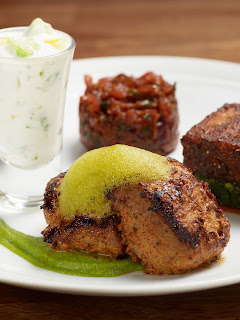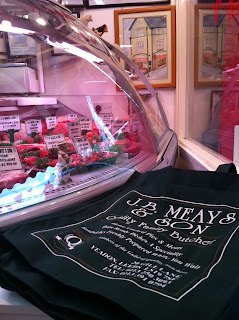Before i go into what you can use it for and the science behind it and how to use it I have to say that this product is absolutely amazing and will change the way you cook and how you present your food. It’s so versatile and the limitations are endless. It’s also suitable for vegetarians. Some great examples are orange foams, chocolate foams, neutral flavour but natural coloured foams for deserts, soy foams, wasabi foams, chilli foams, lemongrass foams, coriander foams for oriental dishes and pretty much anything else you can think of. Let your imagination run wild.
I am no chemist so I have researched this part although I know about most of it in general but I think its best we have all the info in one place for you to digest. Ok now for the science..........
Where is Lecithin from?
Lecithin is typically derived from soy bean as a by-product of creating soy based vegetable oil. Lecithin is extracted from hulled cooked soy beans by crushing the beans and then mechanically separating out (via extraction, filtration and washing) crude lecithin. The crude lecithin is then either enzymaticaly modified. Lecithin can also be derived from animal sources, such as eggs and animal proteins but animal derived lecithin is more expensive than plant derived lecithin so it’s less common and plant lecithin is more commonly used. (Cooking for Geeks: Real Science, Great Hacks, and Good Food by Jeff Potter)
The lecithin I’d like to talk about is plant lecithin.
Health Benefits of Lecithin
There is very little doubt as to the usefulness of lecithin in food and various industries. It is widely used as an emulsifier, but there seems a lot more that lecithin can provide.
The most popular and established health benefit of lecithin is its role in the breakdown of fats in the body. Lecithin is present in the body at the cellular level and though it is not considered as an essential nutrient, it has an indispensable role in regulating the flow of nutrients and waste materials in and out of the cell. For decades now, lecithin has been popular for treating patients with high cholesterol. It has been seen to prevent the build-up of fats and bad cholesterol in the walls of the heart, the arteries and the veins, thereby promoting food cardiovascular health.
The most popular and established health benefit of lecithin is its role in the breakdown of fats in the body. Lecithin is present in the body at the cellular level and though it is not considered as an essential nutrient, it has an indispensable role in regulating the flow of nutrients and waste materials in and out of the cell. For decades now, lecithin has been popular for treating patients with high cholesterol. It has been seen to prevent the build-up of fats and bad cholesterol in the walls of the heart, the arteries and the veins, thereby promoting food cardiovascular health.
It is for this same reason that lecithin is added as a dietary supplement for preventing liver cirrhosis. It disperses fat and help in its breakdown so that they do not accumulate in the liver. Also, since lecithin hastens the breakdown of fats and their metabolism, soy lecithin has been used for promoting weight loss.
Lecithin contains phosphatidylcholine (PC) which the main ingredient assumed to be responsible for its medicinal effect. The truth is, PC is part of the actual membrane that surrounds the cell. Once PC is ingested in the body through lecithin-containing foods or supplements, it is broken down by the body into choline which is vital for the proper functioning of the brain. (Nutritional supplements health guide)
Lecithin contains phosphatidylcholine (PC) which the main ingredient assumed to be responsible for its medicinal effect. The truth is, PC is part of the actual membrane that surrounds the cell. Once PC is ingested in the body through lecithin-containing foods or supplements, it is broken down by the body into choline which is vital for the proper functioning of the brain. (Nutritional supplements health guide)
So how can you use Lecithin in your day to day life?
Lecithin can be used in foams to give long lasting foam, which is often flavoured. This has many benefits as you can let your imagination run wild. My reason for using Lecithin for Britain's best dish was so that I could incorporate a citrus element to the dish to cut through the spices but not soften the masala lamb or the Bombay potato like a gew or a sauce. I was able to add another element to the foam with coriander and rosewater.
I use all types of foams on my dishes and although they are perceived as poncy it does serve a purpose. It’s a way of adding massive amount of flavour to a dish but concentrating it to a foam. I don’t use gas foam canisters as you have to use gelatine as a foam agent and it doesn’t give as good results. Gelatine intolerance is quite common also so Lecithin is not only a great substitute but surpasses it on quality. I will list some recipes for Lecithin foams later on.
Lecithin can also be used in baking as a bread and dough Enhancer: Use lecithin in baking breads, rolls, muffins, biscuits, pancakes, etc., by adding approx. 3 Tbsp. per 3-4 cups of flour. As a 100% natural emulsifier, lecithin improves moisture tolerance and uniform suspension of ingredients and shortens mixing times. Bread texture and elasticity are improved, and crusts are tenderer. Fats and oils are stabilized, reducing rancidity and prolonging freshness.
Lecithin can also be added to your milkshakes or smoothies to give them body and creaminess.
Lecithin recipes
I could literally talk forever and give you a million recipes but I’m just going to give you a few and at a later date depending on the response from this blog post some more. I’m eager to see what recipes you have come up with so don’t forget to keep me posted. I use only powder Lecithin and not granules as it gives the finished products a smother silkier consistency.
Cranberry and apple foam.
100g of cranberries
2x sweet apples of your choice (not cooking apples)
300ml of luke warm water
1tbsp of powder Lecithin
1) Remove the skin and core of your apples then chop roughly into small chunks.
2) Add all ingredients except the Lecithin to the blender and blitz several times. If you have a good drinks blender like a blendtec you will only have to do it once.
3) Add the Lecithin then blend and leave to settle for a few minutes. You will see the foam separates from the liquid.
4) Blend again and now you will see the foam bubbles have a tighter mass to them. Now leave to settle for a few minutes.
5) Scoop the foam from the top and serve.
Prawn and cheese foam
This is great if you’re using raw prawns for your dish.
All the shells from your cooked prawns
25g of strong cheese of your choice
300ml of boiling water
1tsp of sea salt flakes
1tsp of ground white pepper
1tbsp of Nam Pla (Fish sauce) optional
1) Add the water to the pan and bring to the boil.
2) Add the cheese and stir till it’s broken down. (Don’t worry if it’s lumpy)
3) Add the prawn shells then take off the heat to cool for 10mins
4) Add all the ingredients to the blender except the Lecithin and blend a few times.
5) Add the lecithin then blend again a few times leaving it to settle in-between each blend.
6) Scoop of the foam and serve.
Blueberry, cookie and cream foam
100g of blueberries
200ml of single cream
3-4 Cookies
2tbsp of icing sugar
1tsp of natural blue food colouring
1) Add all ingredients to the blender except the Lecithin and blend a few times.
2) Add the lecithin then blend again a few times leaving it to settle in-between each blend.
3) Scoop the foam and serve.
So here’s a few to get you going. Please let me know what concoctions you come up with and enjoy letting your mind run wild.
Don’t forget to follow my blog for future recipes and tips.
Also check out www.jonathondavies.com
Take care
Jonathon




















